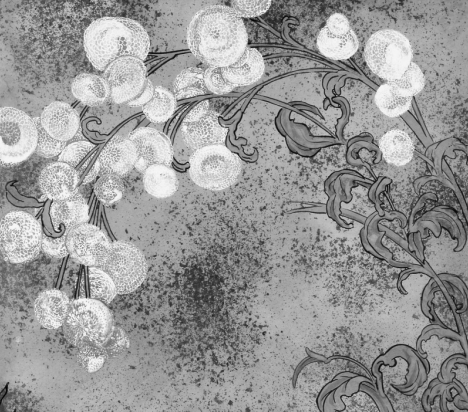Articles/Essays – Volume 40, No. 3
About the Artist: Allan West
The American-born Allan West has become widely respected for his pursuit of a traditional form in Japan. Raised in Washington, D.C., Allan served in the Okayama Japan mission during the early 1980s. In 1987, he returned permanently to Japan to pursue his art because he found that the Japanese attitude toward nature accorded more closely with his own sentiments. He and his wife and their three children live in Tokyo, where they are active members of an LDS ward.
Allan graduated from Tokyo University of the Arts in 1992 with an MFA degree. While there he developed skills in a traditional nihonga style of painting, whose mineral pigments and gold and silver leafing he preferred “because of their inherently natural origins and because of their fluid responsiveness to my brush.” For a time he remained baffled by the problem of giving a three-dimensional effect to his paintings. He found a solution in another Japanese art medium, the byobu, the traditional Japanese folding screen, formerly used to partition rooms for the sake of privacy. Ironically, screen painting was a nearly forgotten art, and he had to teach himself the techniques through experimentation. The endeavor has proven highly successful. As a visit to his website at http://www.allanwest. com will show, his byobu paintings, some of them gigantic, have become widely popular. They may be found in many private and public collections and have appeared in a multitude of exhibitions, mostly in Japan and the United States but also in other countries as well.
Predictably, painting is an act of connecting with nature for Allan. As he prepares his materials and mixes his pigments and glues, he has to be mindful of wind, temperature, and humidity. He says that “the act of painting nihonga is of necessity being aware of nature. The necessity of being at one with nature in order to paint, is a joy. Because of such a necessity, one’s heart naturally turns to nature as a subject as well.”
Allan prefers not to be categorized according to his religious faith. He writes: “I do believe that as artists, in dealing with things philosophical, we are always informed by our faith. I have found that in consideration of those who are most likely to view my work, I’m never tempted to preach. I’m much more of an animist in the ‘Pearl of Great Price’ sense, and often wonder how we Mormons can treat plants and animals, the groaning earth as we do. If we were to truly live our faith in the uniqueness of its perspective on the earth (as a sentient being with a spirit, and plants and animals as sentient beings with spirits following commandments given them) we would lead the world in peaceful, responsible living.”
Front cover: Autumn Brocade, 180 cm x 372 cm, gold leaf, silver leaf, mica, coral, malachite, lapis lazuli, cinnabar, natural mineral pigment, deer bone glue binder.


 Back to full Issue
Back to full Issue

